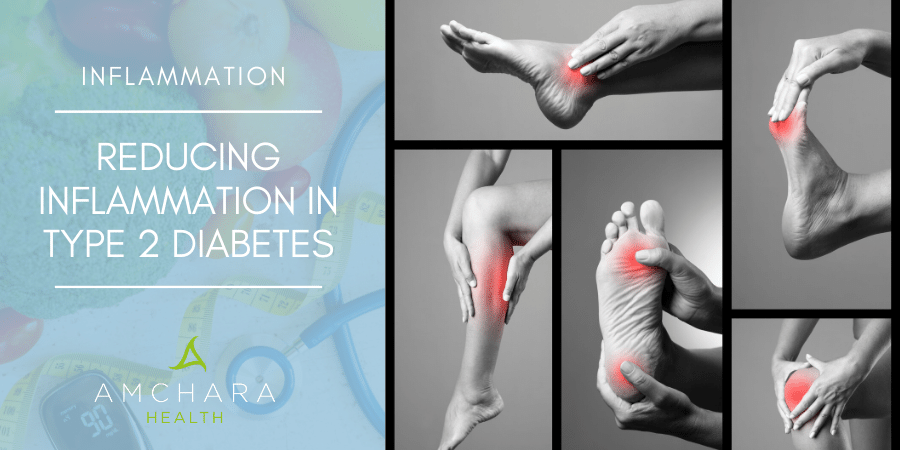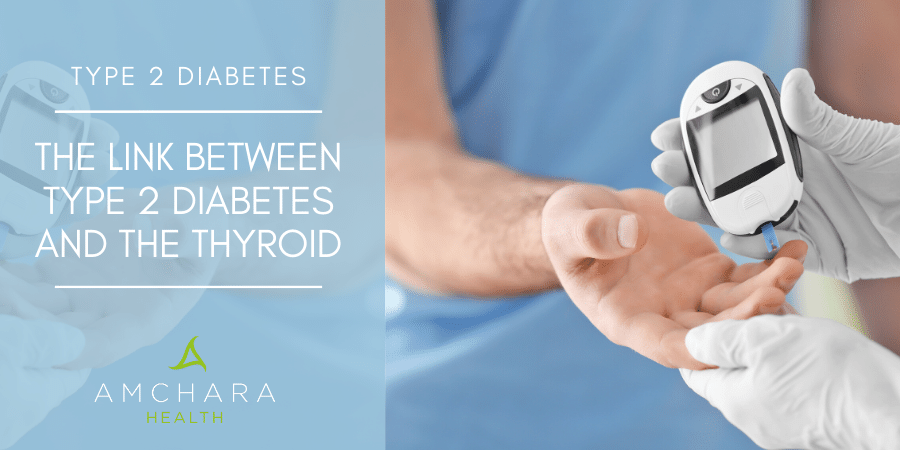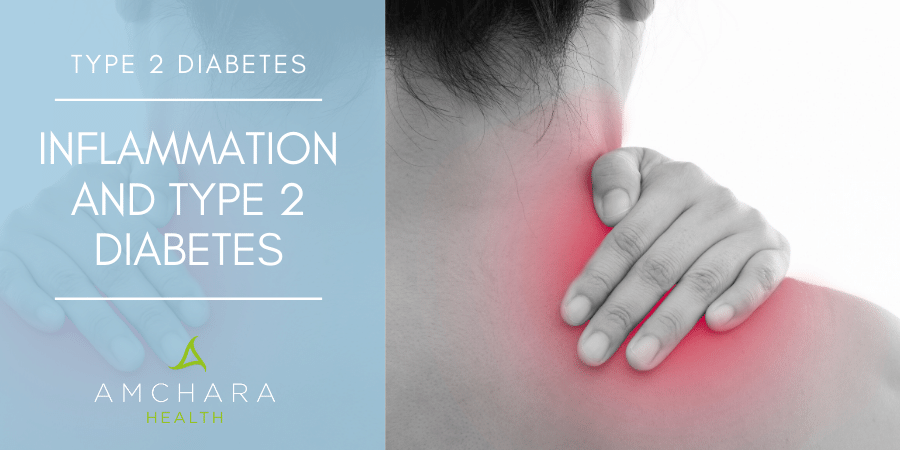A variety of factors are associated with an increased risk of developing Type 2 diabetes, and a strong link has been established between inflammation and Type 2 diabetes. In fact, many experts are now asking if Type 2 diabetes is an inflammatory condition.
In this article we take a look at the evidence behind anti-inflammatory steps that can make a difference in tackling Type 2 diabetes.
Lifestyle disease
Type 2 diabetes affects over 4 million people in the UK alone and is classed as a lifestyle disease because lifestyle choices can significantly impact the development or progression of the condition. Type 2 diabetes is characterised by insulin resistance and a subsequent inability to regulate blood sugar effectively.
Research is showing that lifestyle factors can influence the way the body responds to the hormone insulin. Evidence also points to the fact that the same lifestyle choices can increase inflammatory messengers, which may lead to chronic low grade inflammation.
Let’s take a look at how changing certain lifestyle choices can reduce inflammation in Type 2 diabetes.
Weight management
One of the major contributing factors to the development or progression of Type 2 diabetes is obesity. Carrying fat around the middle can increase both insulin resistance and the risk of cardiovascular disease. In modern society there is an abundance of food and very little energy is expended in order to access food. The rate of obesity is rising, resulting in many negative effects on health.
Obesity is known to reduce secretion of the anti-inflammatory messenger adiponectin (1). Losing weight may reduce pro-inflammatory messengers and increase secretion of adiponectin, therefore reducing inflammation (2).
Several methods may be effective for achieving optimal body weight; studies show that both calorie restriction and fasting have beneficial effects on body weight, as well as on inflammatory markers (3).
Simple changes such as when you eat can give positive benefits to weight management. Keeping food intake to earlier in the day, as well as avoiding eating late at night, can support weight management and influence appetite and inflammation (4).
Exposure to sunlight
It is becoming increasingly common to spend large portions of the day inside, and a lack of exposure to daylight is being linked to the development of various chronic conditions. Exposure to daylight helps to set your inner circadian clock and also stimulates the production of vitamin D.
Vitamin D has several functions in the body including its role in modulating the immune system. Studies show improving vitamin D status can reduce markers of inflammation in Type 2 diabetes (5).
Aim to expose your skin to sunlight for at least 20 minutes per day, ideally before noon. A high quality vitamin D supplement may be required to restore low levels of vitamin D, particularly during the autumn and winter when there is less sunlight.
Be active
Alongside more time being spent indoors, there has also been a rise in sedentary behaviour, a known contributing factor in the development of many health conditions, and associated with an increase in the inflammatory marker CRP (6).
Regular aerobic exercise reduces inflammation and improves Type 2 diabetes (7). Aim to be active daily and vary the type of activities. Although activities like gardening and housework do contribute to activity levels, it is also important to carry out aerobic exercise that leaves you slightly breathless at least 3 times a week. Adding in resistance exercise, either with weights or using body resistance, supports the development of lean muscle tissue and protects your bones.
Stress reduction
Busy lifestyles have led to an increase in the incidence of stress and stress related conditions. Stress can be accumulative – work pressure, family commitments, financial strain and physical stressors can mount up, and chronic stress can increase the release of pro-inflammatory messengers (8).
Taking measures to manage stress can be effective, not only for reducing inflammation and supporting physical health, but also for improving your mental health and wellbeing.
A variety of techniques are useful in stress management, ranging from therapies like CBT and NLP to mindfulness, meditation, breathing techniques and yoga. A short term yoga intervention in 86 patients showed a reduction in the stress hormone cortisol and inflammatory messengers (9).
The key to stress management is to find an activity that suits you. Monitoring heart rate variability during activities can give an indication of your stress response, as the variability of time between heart beats is increased when stress response is low.
Address negative behaviours
In a stressful world it can be easy to adopt negative behaviours. Smoking and excessive alcohol intake are associated with increased inflammation (10). They may be perceived as providing temporary relief from stress or anxieties, but can contribute to inflammation in Type 2 diabetes.
Changing behaviour can be challenging and the use of hypnotherapy and NLP can help with stopping long term habits. Keeping your mind active when trying to break a habit can be useful, and avoid replacing one negative behaviour with another.
Eat to beat inflammation
The type of food eaten can be a factor in the development of Type 2 diabetes. Some foods actively promote inflammation, whilst others dampen the inflammatory response. Making nutritional changes can help to tackle inflammation, improve insulin sensitivity and balance blood sugar – all important in Type 2 diabetes.
- Oily fish
Salmon, mackerel, herring, trout, sardines and pilchards are rich in omega-3 essential fatty acids. These are pre-cursors to anti-inflammatory molecules and a good intake is associated with improved inflammation and sensitivity to insulin, as well as good cardiovascular health. Eating 2-3 portions of oily fish each week is an optimal level.
- Fruit and vegetables
Fruit and vegetables contain an abundance of beneficial nutrients supportive of good health. Fibre helps with regulating appetite and weight management, balancing blood sugar balance and supporting gut bacteria. Your microbiome, the complex ecosystem residing in the gut, feed from fibre and produce molecules that benefit the health of the gut, and influence the immune system and inflammatory response.
Specific vegetables contain a variety of different antioxidant nutrients that help curb the inflammatory response. Dark green leafy vegetables like kale, broccoli and spinach are known to benefit Type 2 diabetes. Carotenoid rich vegetables can offer protection and include squash, pumpkin, sweet potato, yellow peppers and carrots.
Dark berries are rich in potent antioxidants like proanthocyanidins. A good intake of dark berries may significantly impact levels of inflammation and benefit Type 2 diabetes. Eat a variety of berries including blackberries, blueberries, cherries, blackcurrants and raspberries.
Although common advice has been to eat around 5 portions of fruit and vegetables a day, experts now believe optimal levels are around 8-10 potions a day. Aim for a variety of colours and eat more vegetables than fruit, as they are lower in natural sugars.
- Avoid sugars
Whilst high blood sugar is implicated in an increase in inflammation, it also seems fluctuations in blood sugar levels are important, and the ‘blood sugar rollercoaster’ may cause an increase in oxidative stress and inflammation (11).
Avoiding sugary sweet foods and white refined foods such as white bread, pasta and biscuits and cakes can help maintain stable blood sugar level. Choose whole grain alternatives like brown rice, wholemeal pasta and bread. Adding a good protein such as eggs, chicken, oily fish, lentils or beans also helps prevent the blood sugar rollercoaster.
- Mediterranean diet
The Mediterranean diet is often seen as one of the most beneficial diets and is classed as an anti-inflammatory diet. The Mediterranean diet includes whole foods, fruits, nuts, vegetables, legumes, cereals, olive oil, oily fish, and a low meat and dairy consumption.
Studies into the benefits of the Mediterranean diet in Type 2 diabetes clearly show a benefit. Not only does it improve insulin sensitivity and give better blood sugar balance, but it lowers inflammation and markers like CRP are reduced (12).
- Include turmeric
Turmeric’s active ingredient, curcumin, is a potent antioxidant and has been shown to reduce inflammation and improve Type 2 diabetes (13). In one study a daily intake of curcumin improved the function of insulin secreting cells and reduced the incidence of Type 2 diabetes (14).
Turmeric can be added to soups, curries, sauces or used for making golden milk – an Ayurvedic tonic that can commonly be referred to as a turmeric latte. Combining turmeric with black pepper is thought to enhance bioavailability.
Takeaway
Type 2 diabetes is a complex condition and many factors are associated with its development.
A number of lifestyle alterations can reduce the risk of developing Type 2 diabetes and even put it into remission. Tackling the inflammatory side of Type 2 diabetes can be achieved through several changes.
If you would like to know how specific lifestyle changes may affect your risk of Type 2 diabetes, or other health conditions, then an in-depth consultation with an Amchara Personalised Health practitioner will guide you, with nutritional and lifestyle advice tailored to your individual circumstances, health status and health goals.
We’re dedicated to providing you with both insightful information and evidence-based content to provide you with actionable knowledge and tips to help you on your journey to optimal health.
Did you find this article useful?
We’d love to hear your thoughts, get in touch!
Read this next:




